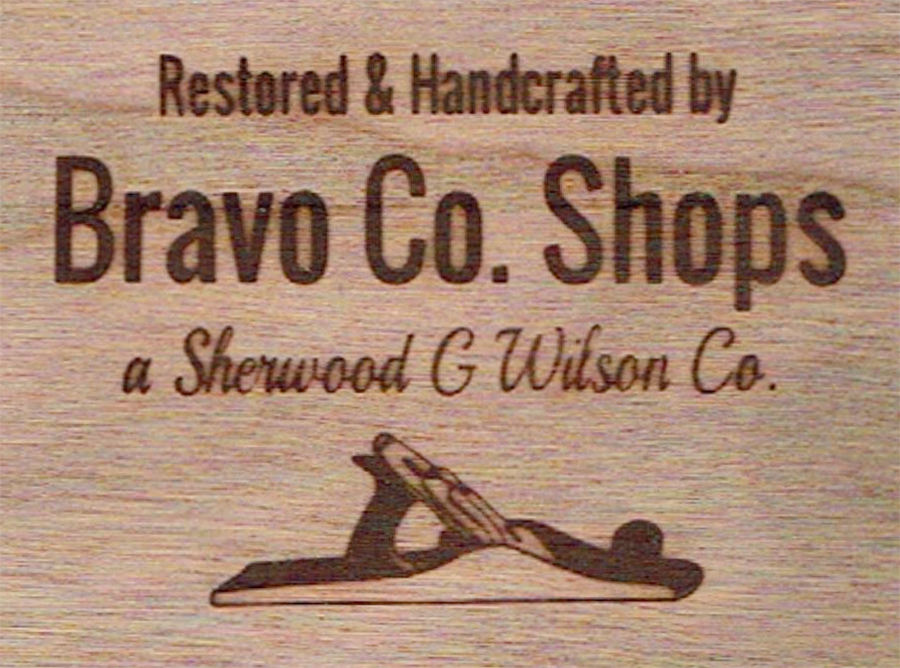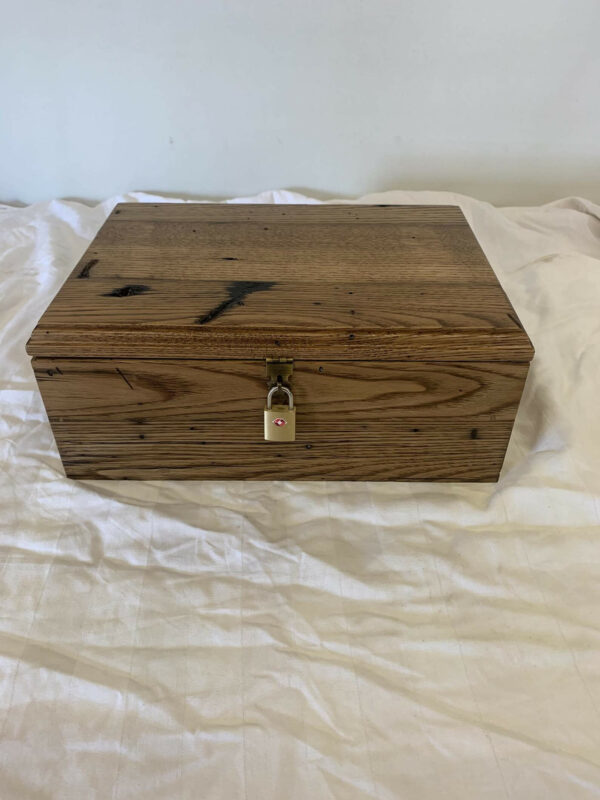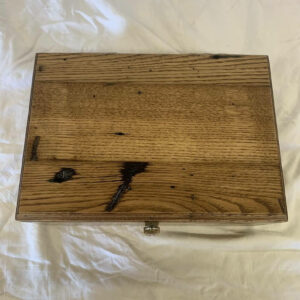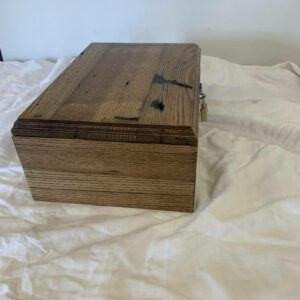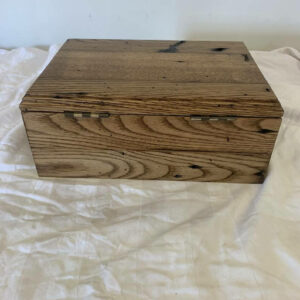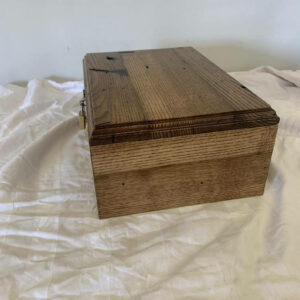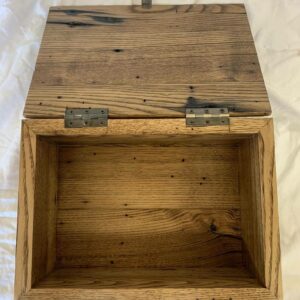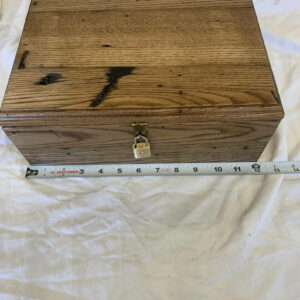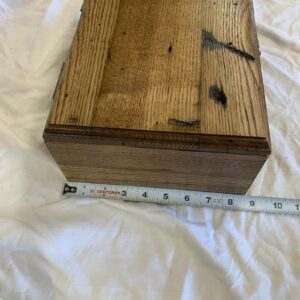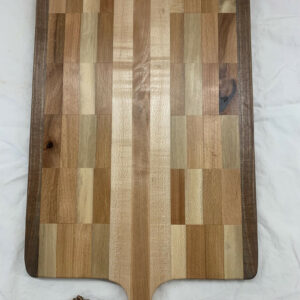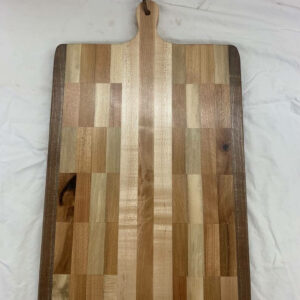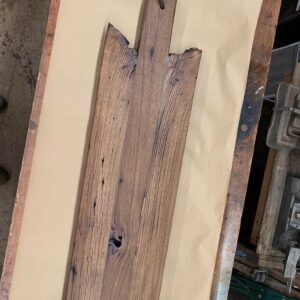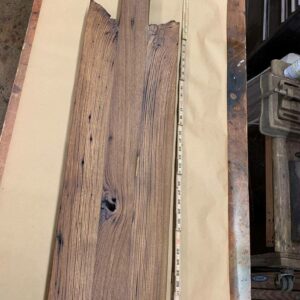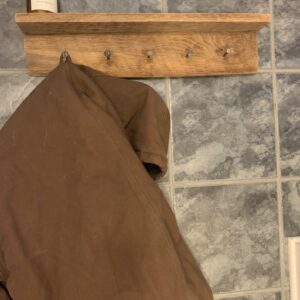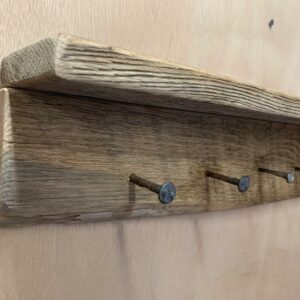$155.00
Handmade Reclaimed American “Wormy” Chestnut Keepsake/Jewelry Box
Handmade Reclaimed American “Wormy” Chestnut Keepsake/Jewelry Box
This rustic keepsake/jewelry box is handmade in Southwest from very rare American “Wormy”Chestnut 2x4s I salvaged from a house in West Virginia 45 years ago. (See below for a short history of the American Chestnut Blight.) I included pictures of the actual 2x4s used. I estimate this wood to be about 115 years old.
This box is very customizable up to 12 deep and virtually any width and height. Message or call me for a quote if you would like a custom box. The box listed here is: 12” wide,
8 1/2” deep, 5” tall.
The pictures here are intended as a representative sample for my Wormy Chestnut keepsake/jewelry boxes. You will receive a box made in the same pattern, the same size and of the same reclaimed wood species as the sample. All of my boxed are handmade by me from 100% reclaimed American Chestnut, therefore each item is literally one of a kind with different wood characteristics and individual reclaimed attributes including but not limited to grain, color, dimensional uniformity, checks, splits, cracks, holes, knots, warp, twist, bow, cuts, scrapes, scratches etc. No two pieces are the same so please consider this before you order.
If you are interested in a custom box please keep in mind Bravo Company Shops is a full service shop specializing in antique restoration and unique builds inspired by the characteristics of each piece of reclaimed wood. I am not a factory with an assembly line, I am one person who enjoys making things with my hands. My shop is very informal, my processes are simple. If you want a custom box give me a call and we will work out the details the old fashioned way; by talking.
History of the American Chestnut:
The history of The American Chestnut Foundation (TACF) chronicles the ongoing pursuit of a fundamental goal: to develop a blight-resistant American chestnut tree through scientific research and breeding, and to restore the tree to its native forests along the eastern United States.
More than a century ago, nearly four billion American chestnut trees were growing in the eastern U.S. They were among the largest, tallest, and fastest-growing trees. The wood was rot-resistant, straight-grained, and suitable for furniture, fencing, and building. The nuts fed billions of wildlife, people and their livestock. It was almost a perfect tree, that is, until a blight fungus killed it more than a century ago. The chestnut blight has been called the greatest ecological disaster to strike the world’s forests in all of history. The American chestnut tree survived all adversaries
